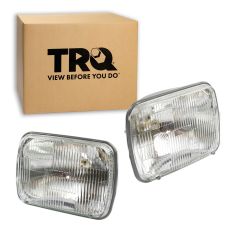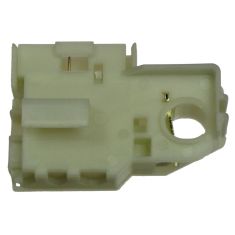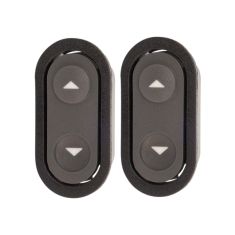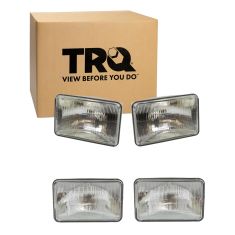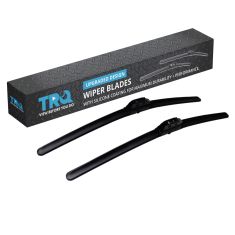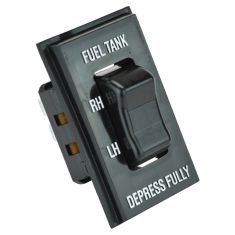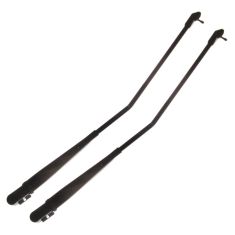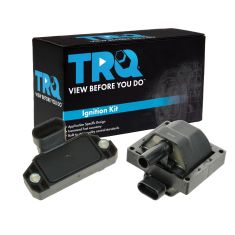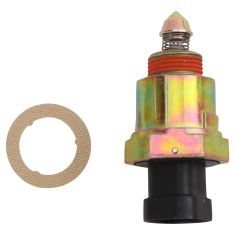Chevrolet C3500 Truck
-
Notify When Available$51.95Save 16%List $61.95 Save $10.00Brand: TRQ - HLA93557$51.95Save 16%List $61.95 Save $10.00
-
Notify When Available
-
Notify When Available$76.95Save 26%List $103.95 Save $27.00Brand: TRQ - ACA89044$76.95Save 26%List $103.95 Save $27.00
-
Notify When Available$29.95Save 27%List $40.95 Save $11.00Brand: TRQ - SWA40803$29.95Save 27%List $40.95 Save $11.00
-
Notify When Available$84.95Save 11%List $95.95 Save $11.00
Replaces 4 Piece Headlight Set TRQ LKA93536
Brand: TRQ - LKA93536$84.95Save 11%List $95.95 Save $11.00 -
Notify When Available$37.95Save 42%List $64.95 Save $27.00Brand: TRQ - WPB54556$37.95Save 42%List $64.95 Save $27.00
-
Notify When Available$24.95Save 17%List $29.95 Save $5.00Brand: TRQ - SWA41713$24.95Save 17%List $29.95 Save $5.00
-
Notify When Available
Replaces Chevrolet GMC Driver & Passenger Side Windshield Wiper Arm 2 Piece Set TRQ WWA93106
Brand: TRQ- WWA93106$59.95Save 16%List $70.95 Save $11.00Brand: TRQ - WWA93106$59.95Save 16%List $70.95 Save $11.00 -
Notify When Available$60.95Save 8%List $65.95 Save $5.00
Replaces 2 Piece Ignition Kit TRQ ICA60042
Brand: TRQ - ICA60042$60.95Save 8%List $65.95 Save $5.00 -
Notify When Available$28.95Save 17%List $34.95 Save $6.00
Replaces Idle Air Control Valve TRQ AIA93057
Brand: TRQ - AIA93057$28.95Save 17%List $34.95 Save $6.00
The C3500's Beginnings
Chevy's C3500 is the top of Chevrolet's pickup line. Although Chevy had made trucks long before, the C3500's roots can be traced to the 1960 C/K pickup line manufactured by GM. It was one of the best-selling truck lines in the U.S, and the "C" represented two-wheel drive while the "K" represented four-wheel drive.
The C3500 hasn't always been known as such. It started out in 1960 as the C30, which stood for one-ton truck. It came in Stepside or Fleetside bed styles. A new drop-center frame was installed; a coil spring rear suspension; an 8 ft. cargo box; and three engine choices: a 235ci I6, a 283ci V8, or a 348ci V8. In 1963, C series trucks received the 230ci and 292ci I6 engines. In 1964 the windshield changed from a flat to a curved form to provide better visibility and more room inside the cabin.
The C3500 Built Throughout the Years
The second generation began in 1967 and expanded the idea of what a truck could be. Instead of making a pickup for work, the truck was designed to appeal to families too-particularly the ones tugging campers on vacation. The C30's height was lowered by five inches, the wheel base increased to 127 inches, rear coil spring suspensions became standard, and a CST package was offered for the camper pickup. The standard engines available on the C30 were a 250ci I6 or a 283ci V8 accompanied with a three-speed manual transmission. Also introduced for this generation was the Chevy Longhorn, which was an extended version of the C30 with an 8.5 ft. cargo box and wheel base of 133 inches.
The ‘70s supported a boxier look and feel to the truck. The flatter hood, egg-crate grille with square headlights, sharply carved body, and sleeker windshield all gave the C30 a new image. It had an optional crew-cab that came with an 8 ft. Fleetside box and was capable of fitting six-passengers. It also came with a 3,800 lb. axle, and three new trim levels: the Scottsdale, Cheyenne, and Silverado. In the late ‘70s, Chevy was the first company to offer a package with power windows and locks for trucks. However, the design generally remained unaltered other than a few comfortable interior upgrades and changes to the grille. Due to government regulations and the energy crisis, most of the improvements were made on the engine. Options included a 4.8L I6 with 120 horsepower or a 5.7L V8 with 160 or 175 horsepower. Diesel options included a 6.2L V8 capable of 135 or 148 horsepower. An aluminum transfer case helped lower the weight, and the all-wheel drive was switched to part-time four-wheel drive with an all-new transfer case that allowed the shift from two-wheel drive to four-wheel drive at speeds under 25 mph. Automatic front locking hubs were included with the new system.
During this time, for one year in 1987, the "C/K" nomenclature was switched to "R/V," " while Chevy worked on a new version of the C/K platform. The older style continued to be built as R/V models until 1991. The new trucks were built upon the GMT400 platform with longer bodies. They stood for the same thing: "R" for 2WD and "V" for 4WD. Headlights were changed to a rectangular shape, and the interior was enlarged. In 1988, Chevrolet returned to the "C/K" nomenclature and changed the name from C30 to C3500. During this generation, a Work Truck model and the Z71 package for the off-road enthusiast was introduced.
GM introduced the C3500 HD in 1991. The C3500HD was intended to offer some of the advantages of a medium duty truck in a pickup truck. The C3500HD used a heavier frame than the standard C3500 and used larger axles and tires. It was available with a 5.7L small block V8, a 7.4L big block or, starting in 1992, a 6.5L diesel V8. The C3500HD was phased out on favor of the C4500, after about a decade.
Throughout the decade, the C/K line improved its safety features with better steering, lower side view mirrors, four-wheel antilock brakes, and airbags on all sides. Three-door models were introduced in the late ‘90s, as well as the standard Vortec 4300 that could reach up to 200 horsepower. By the end of the decade, the C/K models were known for their high satisfaction, innovation, and tough handling for the outdoors. They had such a loyal fan base that despite the fact the Silverado took over production in 1999, a few C/K models were produced in the early 2000s.
